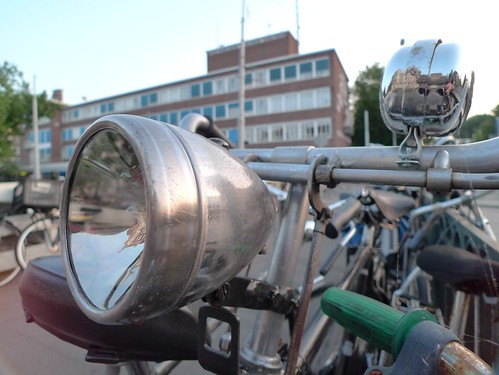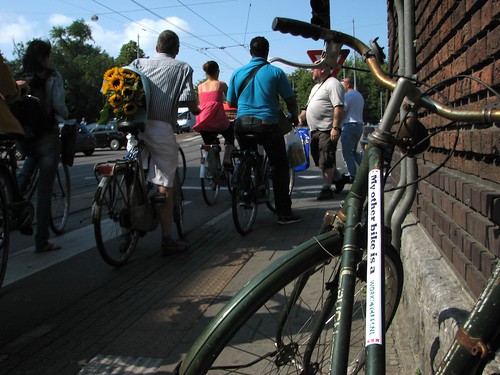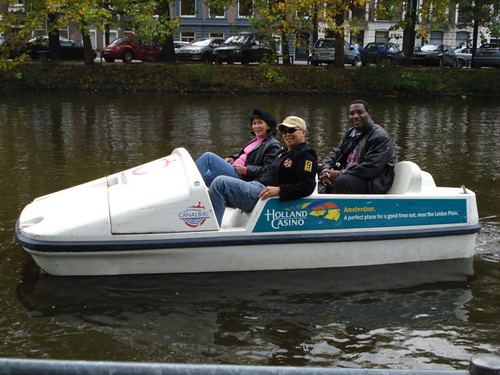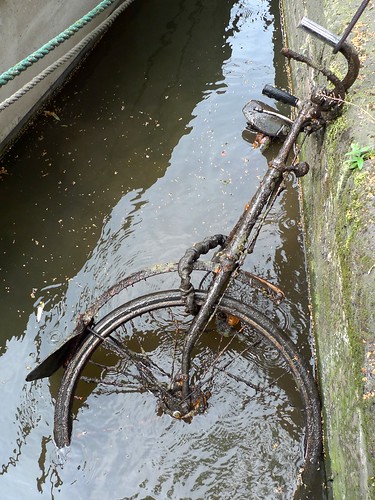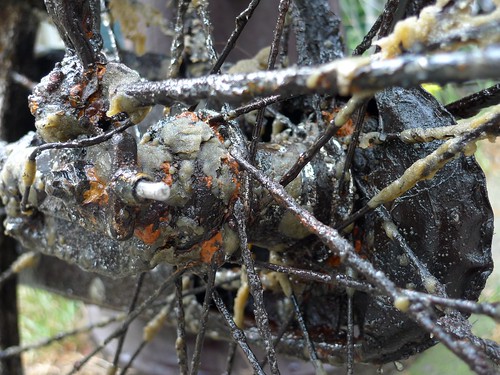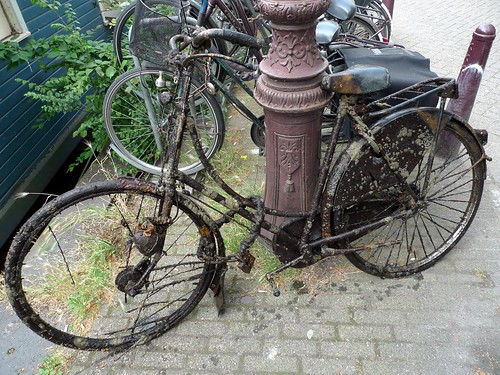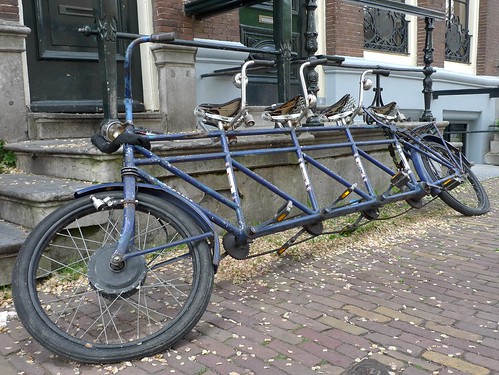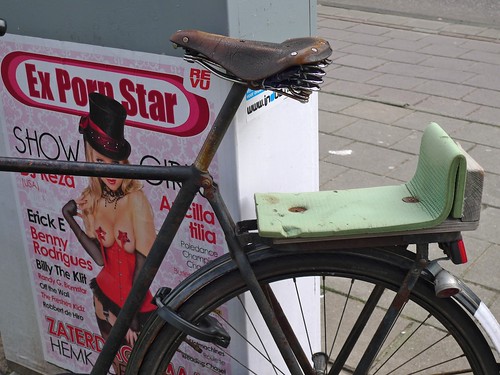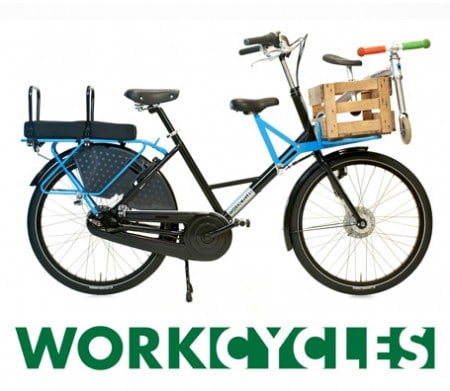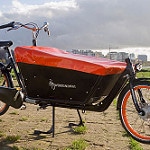Lovely Fongers just sittin’ there
Friday, August 7th, 2009Yep, I love old bikes, especially really nice old bikes. I would have taken more photos of this old Fongers opafiets if he hadn’t been sandwiched between a half dozen other bikes… Amsterdam style. So I had to be content with a close-up of the giant, bullet-shaped Philips headlamp. If you look carefully you can see the reserve bulb above the normal bulb. Also note the soft luster of the nickel-plated finish on the headlamp, handlebar and brake rods.
Though I’m no Fongers expert I do know that they’re widely regarded as the best of the old Dutch bikes, which would make them the best of the best old bikes. Fongers, based in bicycle capital of the world Groningen, made both standard production bikes like this one and also very, very special bespoke bikes with unusual features such as locking headsets, sophisticated rim brakes and eccentric chain adjustment. These special Fongers models were extraordinarily expensive… and still are if you can find one.
To the best of my (admittedly limited) knowledge only the older (prewar perhaps?) Forgers are of interest to the serious Fongers fanatics. In the 1950’s Fongers fused with a couple other northern bike makers and then in 1970 it was taken over by Batavus. Bikes have been periodically produced since then under the Fongers name but nothing to get your panties in a bunch about.
Andre Koopmans’ photostream in Flickr has quite a few great pictures of old Fongers bikes (including some made from hundred year old glass negatives), along with some truly arcane discussion about the various esoteric Fongers special bikes from the beginning of the last century. An example below:

